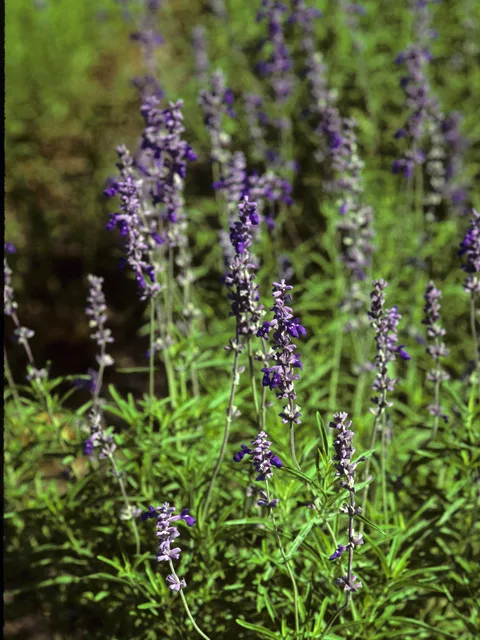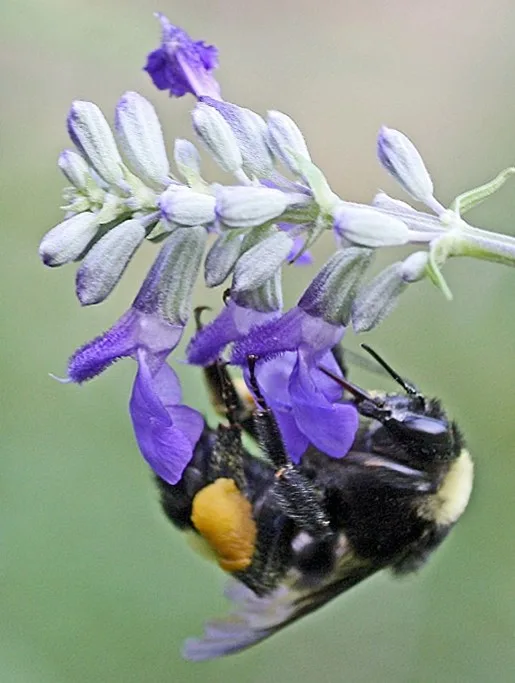Here you can see the Native Plant Guide or read our Blog!
Native Plant Guide
Native Plant Blog
- Mealy Blue Sage – A Surefire Winner

Photo courtesy of the Ladybird Johnson Wildflower Center Are you seeking a hardy, low-maintenance, and long-blooming native North Texas plant for your landscape? The Mealy Blue Sage (Salvia farinacea) provides a winning combination for the North Texas native plant enthusiast. In recognition of its beauty and low maintenance requirements, the Lady Bird Johnson Wildflower Center honored the plant as its winner of the 2023 Wildflower of the Year.
Easy to Grow and Love
Mealy Blue Sage is a perennial native to large parts of Texas, along with small sections of Oklahoma and New Mexico. This resilient plant is commonly found in many regions of our state, due to its ability to thrive in prairies, meadows, and open woodlands.The common name derives from the vibrant blue flowers, and “mealy” refers to the white, powdery substance that coats the plant’s stems and calyxes.
Drought–tolerant and deer–resistant, Mealy Blue Sage typically reaches 2 – 3 feet in height and usually forms a mound as wide as the plant is tall. It can be used in perennial borders, native beds, and naturalized areas.
What sets Mealy Blue Sage apart is not just its captivating appearance but also its multifaceted benefits:
Six Reasons to Love Mealy Blue Sage

- With an exceptionally long bloom period, Salvia farinacea can add color to your gardens from early spring to late fall. Its vibrant violet-blue flowers create a delightful visual display. Its flowering period can be enhanced further by pruning to produce thicker, more compact foliage, and increased flower production.
- This resilient charmer is an excellent addition to almost all North Texas landscapes. As a Texas native, it can withstand our brutal summers. It thrives in full sun to partial shade and is tolerant of various soil types, including sandy, loamy, and clay soils. Once the plant is established, it thrives with minimal supplemental water.
- A prolific pollinator, it enhances any North Texas pollinator garden. With its nectar, it helps support a host of bees, hummingbirds, and butterflies.
- As a native plant species, Salvia farinacea plays a crucial role in helping support biodiversity. In addition to its nectar production, its seeds provide sustenance for various bird species and small animals.
- With its combination of toughness and beauty, Mealy Blue Sage should be an easy choice for North Texas gardeners. The plant’s slender, upright stems form dense clumps adorned with lance-shaped leaves. Plus, the distinctive blue flowers on elongated spikes are contrasted by the plant’s silvery-green foliage.
- Mealy Blue Sage is adaptable to a wide range of growing conditions. While not particular about its location, planting in well-drained soil is vital to promoting growth and flowering. Additionally, it does best with a minimum of 6 – 8 hours of sunlight daily. Like most sun-loving natives, less sunshine typically results in more sprawling and taller plants.
Whether you are an experienced gardener or just beginning, Mealy Blue Sage should be on your spring native plant shopping list. This winner of a plant can bring a fantastic combination of beauty and resilience to your garden.
A reminder that the Heard Museum and Wildlife Sanctuary’s spring native plant sale will be held on April 12 – 14, 2024. Note that April 12 is for Heard members only.
